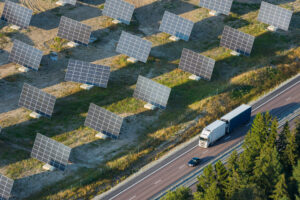The transition to an all-renewable and fossil-free energy production means the electricity system has to adapt to new challenges. A smarter electricity grid features both innovative technical solutions and new players on the market.
The Swedish power grid is transforming into a customer-centric and digital system providing differentiated services and transactions as well as accommodating customer-connected distributed energy resources. New network technology solutions such as wide-area monitoring and control and smart metering infrastructure is strengthening Sweden’s stable and reliable grid and allowing a growing start-up scene to flourish. On top of this, Sweden is ranked number one on the World Economic Forum’s energy transition index.
Innovations and regulations paved the way
The current smart grid system is a result of gradual coevolution between the Swedish power grid and power generation. Through the development of hydroelectric power and the accompanying developments of the transmission grid, Sweden had already in the early 20th century a reliable system for supplying the whole nation with power. From this stable platform, further improvements in grid capacity were achieved in the 1970s with the integration of nuclear power and further extension of hydroelectric power. Forward-looking political reforms such as the early introduction of the carbon tax in 1991 and the deregulation of the energy market in 1996 also had a substantial impact on the development.

Image by Hans Berggren/Scandinav/imagebank.sweden.se
For instance, the carbon tax made it possible to eliminate coal from cogeneration plants, thereby paving the way for biofuels. Later innovations, such as smart metering and the electricity certificate system, have strengthened the incentive structures for using more sustainable and renewable alternatives. The overall political willingness for energy transition can also be found in more contemporary reforms such as the interparliamentary energy agreement, which stipulates that 100 % of electricity should come from renewable sources by 2040.
The future
Flexibility in use and capacity in storage are two areas that are central to the development of the smart grid sector. To meet future demand for power, changes in both production and use are essential.
Today, electricity peak demand typically occurs at specific and relatively predictable times during the day. For households, these peak hours are in the morning and in the evening, when people either get ready for the day or come home from work. Peak demand puts substantial pressure on the electrical grid. This requires a sustained period of significantly higher than average levels of power supply. A proposed solution is to incentivise the use of electrical power when electricity is abundant and store energy locally using market-based mechanisms.
There are many benefits to this type of solution. First, it would mean a more managed grid load and less pressure on the electrical grid. Secondly, for the end customer, increased energy usage in the off-hours and decreased usage in peak hours would mean a cheaper energy bill. Finally, the increased energy storage capacity of the grid would also enable the storage of energy by grid-connected, customer-owned distributed energy resources such as solar panels.